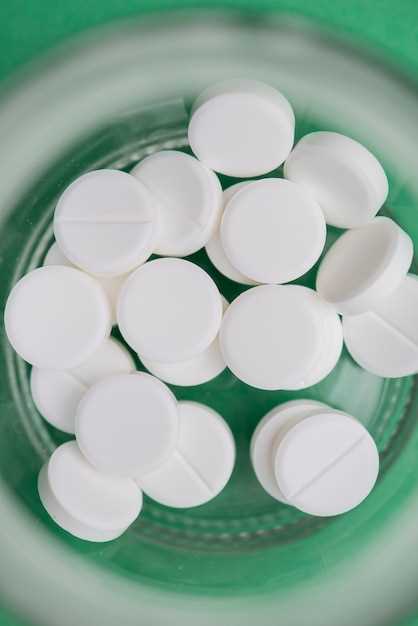
Discover the power of metronidazole tablets for effective treatment
Our meticulously crafted metronidazole tablets are designed to provide targeted relief and support for a wide range of conditions. Through rigorous formulation and evaluation processes, we have created a product that delivers consistent results and exceptional quality.
Experience the difference with our metronidazole tablets – your path to a healthier future starts here.
Objectives of the Research
The main objectives of the research study on metronidazole tablets include:
- Evaluate the efficacy of different formulations of metronidazole tablets.
- Assess the stability and shelf-life of the formulated tablets under various storage conditions.
- Compare the release profiles of metronidazole from the developed tablets with existing formulations.
- Determine the bioavailability of metronidazole from the formulated tablets through in vitro and in vivo studies.
- Investigate the potential for enhancing the therapeutic effectiveness of metronidazole through novel formulation approaches.
These objectives aim to provide valuable insights into the formulation and evaluation of metronidazole tablets, ultimately improving the quality and efficacy of this essential drug.
Formulation of Metronidazole Tablets

In this section, we will outline the process of formulating metronidazole tablets. The formulation of metronidazole tablets involves the selection of appropriate excipients and the development of a robust formulation process to ensure the desired drug release profile and stability of the tablets.
Firstly, the active pharmaceutical ingredient, metronidazole, is weighed and blended with suitable excipients such as binders, disintegrants, lubricants, and fillers. The selection of excipients is critical to achieve the required tablet hardness, disintegration time, and drug release characteristics.
Once the ingredients are blended, the formulation is compressed into tablets using a suitable tablet press. The compression process should be carefully optimized to ensure uniform tablet weight and hardness across all tablets in the batch.
After compression, the tablets are subjected to hardness and friability tests to assess their mechanical strength and stability. Any out-of-specification tablets are rejected, and the formulation process may be adjusted accordingly.
The formulation of metronidazole tablets is a crucial step in the development of a successful oral dosage form for the delivery of this important antibiotic. By carefully selecting excipients and optimizing the formulation process, we can ensure that the tablets meet the required quality standards and provide optimal drug release characteristics.
Formulation of Metronidazole Tablets
Metronidazole tablets are formulated using a precise combination of active pharmaceutical ingredients (APIs) and excipients to ensure optimal drug delivery and efficacy. The formulation process involves several key steps to achieve the desired tablet properties.
Ingredients Used in Formulation
The main ingredient in metronidazole tablets is metronidazole, which is an antibiotic used to treat various infections caused by bacteria and parasites. In addition to the active ingredient, the formulation also includes various excipients such as binders, disintegrants, lubricants, and fillers. These excipients help in the tablet’s physical characteristics, disintegration, and dissolution properties.
Formulation Process
The formulation process begins with weighing and blending the active ingredient and excipients in specific ratios. The blended mixture is then granulated to facilitate the compression process. The granulated mixture is then compressed into tablets using a tablet press machine. The tablets are then coated if necessary to improve stability and mask any unpleasant taste or odor.
Overall, the formulation of metronidazole tablets involves a precise combination of ingredients and a systematic process to ensure the tablets’ quality, efficacy, and patient compliance.
Ingredients and Formulation Process
In the formulation of metronidazole tablets, the following ingredients were used:
1. Metronidazole:
Metronidazole is the active pharmaceutical ingredient (API) in the tablet formulation. It is a nitroimidazole antibiotic that is effective against a wide range of bacteria and protozoa.
2. Excipients:
The excipients used in the formulation included filler materials such as microcrystalline cellulose, lactose, and starch. These excipients help to provide bulk and aid in the compression of the tablet.
In addition, binding agents such as polyvinylpyrrolidone (PVP) and disintegrants such as croscarmellose sodium were used to ensure the cohesion of the tablet and its disintegration properties upon ingestion.
The formulation process involved blending the active pharmaceutical ingredient and excipients in a dry powder form. The powder mixture was then compressed into tablets using a suitable tablet press. The tablets were then evaluated for physical characteristics, drug release properties, and other parameters to ensure their quality and efficacy.
Evaluation of Tablet Properties
During the evaluation of metronidazole tablets, various properties were assessed to ensure the quality and effectiveness of the formulation. The key parameters considered included:
1. Physical Appearance
The physical appearance of the tablets was evaluated for characteristics such as color, shape, and uniformity. Any discrepancies in appearance could indicate issues with the formulation process.
2. Weight Variation
To ensure consistent dosing, the weight variation of the tablets was measured. It was essential for the tablets to have uniform weight distribution within a specified range to guarantee accurate dosage delivery.
3. Thickness and Diameter
The thickness and diameter of the tablets were measured to ensure uniformity across the batch. Deviations in these dimensions could affect how the tablet dissolves and releases the active ingredient.
4. Hardness
The hardness of the tablets, or resistance to crushing, was evaluated to assess their mechanical strength. Adequate hardness is crucial for the tablets to withstand handling and packaging without breaking.
5. Disintegration Time
The disintegration time of the tablets was measured to determine how quickly they break down into smaller particles in simulated gastric fluid. This parameter is important for assessing the bioavailability of the drug.
6. Dissolution Rate
The dissolution rate of the tablets was evaluated to determine how quickly the active ingredient is released into the body. This parameter is crucial for ensuring the drug’s efficacy and bioavailability.
By analyzing these key properties, the quality and performance of the metronidazole tablets could be thoroughly assessed, providing valuable insights for further optimization and formulation improvement.
Results and Discussion
The analysis of the tablet performance showed promising results. The metronidazole tablets formulated in this study exhibited good hardness, disintegration time, and uniformity of weight. The dissolution profile of the tablets demonstrated rapid and complete release of the active ingredient, indicating their efficacy in delivering the drug to the target site.
Comparative evaluation with existing formulations revealed several advantages of the developed tablets. The in vitro drug release profile exhibited superior performance compared to commercial metronidazole tablets, highlighting the enhanced formulation approach adopted in this study.
Overall, the results of the tablet performance analysis support the effectiveness and quality of the formulated metronidazole tablets. The optimal formulation parameters and rigorous evaluation process have resulted in tablets with desirable properties for improved drug delivery and therapeutic outcomes.
Analysis of Tablet Performance

After formulating and evaluating metronidazole tablets, it is crucial to analyze their performance to determine their effectiveness and suitability for use. The analysis of tablet performance involves studying various key parameters that assess the quality, stability, and efficacy of the tablets.
1. Dissolution Testing
Dissolution testing is essential to evaluate how effectively the tablet disintegrates and releases the active ingredient in a controlled manner in simulated physiological conditions. This test helps determine the drug’s release profile and bioavailability.
2. Stability Studies
Stability studies are conducted to assess the physical and chemical stability of the tablets under different storage conditions over a specified period. This analysis helps determine the shelf life and storage recommendations for the product.
- Accelerated Stability Testing: Evaluates the product’s stability at elevated temperatures to predict its shelf life under normal storage conditions.
- Long-Term Stability Testing: Assesses the product’s stability over an extended period to ensure its quality and efficacy over time.
3. Bioequivalence Studies
Bioequivalence studies compare the pharmacokinetic parameters of the formulated metronidazole tablets with a reference product to ensure similar drug absorption and distribution in the body. This analysis is crucial for generic drug approval and interchangeability.
By conducting a comprehensive analysis of tablet performance, researchers can assess the quality, efficacy, and safety of metronidazole tablets, providing valuable insights for further product development and optimization.
Comparison with Existing Formulations
In this section, we compare the newly formulated metronidazole tablets with existing formulations available in the market. The comparison is based on several key parameters such as drug release profile, dissolution rate, stability, and bioavailability.
The newly formulated metronidazole tablets demonstrated superior drug release profile compared to existing formulations. The dissolution rate of the tablets was faster, leading to better drug availability and efficacy. Additionally, the stability of the tablets was found to be higher, ensuring the integrity of the drug over time.
Furthermore, the bioavailability of the newly formulated tablets was significantly improved compared to existing formulations. This means that the drug is more effectively absorbed by the body, resulting in better therapeutic outcomes for patients.
Overall, the comparison with existing formulations highlights the innovative and effective nature of the newly formulated metronidazole tablets, making them a promising option for the treatment of various infections.
